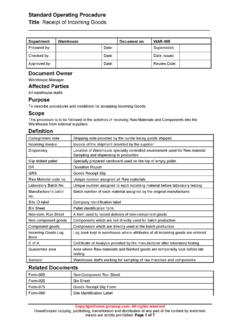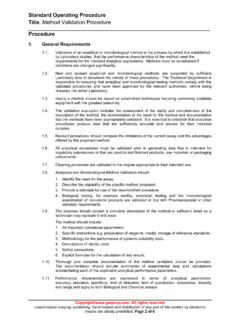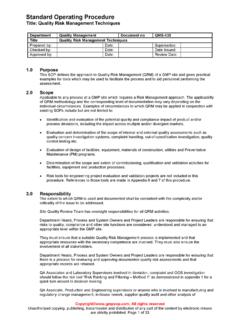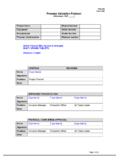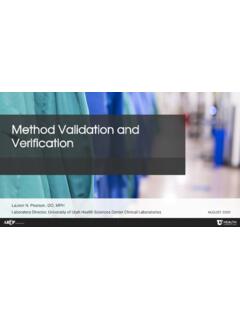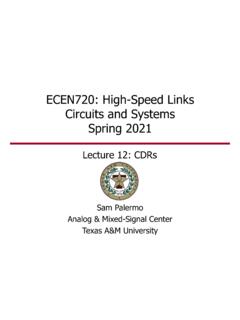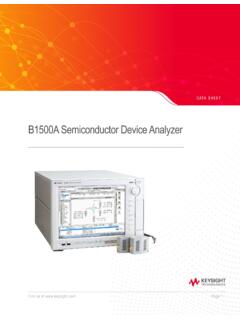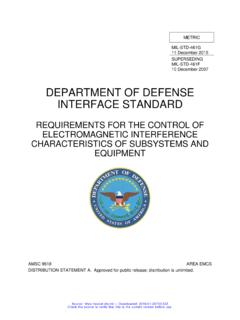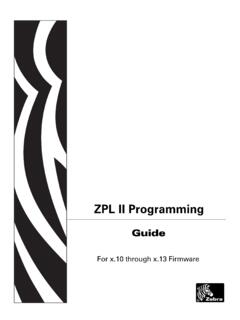Transcription of Process Validation Protocol template sample - GMPSOP
1 TEM-290 Issue date Process Validation Protocol (Reference: SOP _____) Page 1 of 24 Project Name Project Number Equipment Serial Number Manufacturer Model Number Process Line/Location Protocol number [Enter Product Title, Number & Strength] MULTI VITAMIN TABLETS PRODUCT CODE: WRITTEN: REVIEWED: Name: [Type Name] Signature: Position: Project Chemist Date: APPROVED FOR EXECUTION: Name: [Type Name] [Type Name] [Type Name] Signature: Position: Validation Manager Production Officer QA Team-Leader Date: Protocol COMPLETION APPROVAL: Name: [Type Name] [Type Name] [Type Name] Signature: Position: Validation Manager Production Officer QA Team-Leader Date: TEM-290 Issue date Process Validation Protocol (Reference: SOP _____) Page 4 of 24 5. REFERENCED DOCUMENTS [Reference to specific documents should be made to support the Validation study.]
2 At minimum references should be made to all manufacturing and quality documentation used to manufacture, pack and test the product. Where applicable, version numbers should be included.] 6. Validation STRATEGY This Process Validation will consist of three Multi vitamin tablet lots of commercial size (XXXXkg) validated under the control of the Technical Services department for the performance of this Protocol . Detail if prospective, concurrent or retrospective approach and describe the release for sale mechanism. Detail the number of batches to be included in the Validation study and if product bracketing is to be used. A prospective Validation approach will be used for this Validation study therefore a minimum of three successful consecutive batches will be required before the product is released for sale.
3 Release for sale will be by an approved Validation report. All batches will be made using the same Process and each batch will be subjected to the analysis set out in Section X and Appendix X of this document. Detail any trials or development batches that have been manufactured and briefly describe the outcome Development batches have been manufactured to test this new formulation and Process , refer to XXXXXXX. Development batches were manufactured at full scale using the same manufacturing Process as the Validation batches. All results met the acceptance criteria. All Validation batches will be manufactured following the same manufacturing Process as detailed in the manufacturing instructions. The Validation batches meet all requirements specified in the Protocol including all registered release for sale tests.
4 All critical Process variables in the manufacturing Process (Spray Granulation, Milling, Blending and Tabletting) will be reviewed. Each batch will be subjected to the analysis set out in Section 9 of this document. verification that all relevant SOP s are current and in place will be performed. verification that training records exist for each manufacturing Process procedure in this Protocol and is documented. verification that Equipment Qualifications and Calibrations have been completed for all equipment to be used in the manufacturing Process , including laboratory equipment, facilities, utilities, systems (including computerised systems), will be performed prior to Validation of the manufacturing Process . 7. MANUFACTURING Process Process Validation Prerequisites Document training on all required SOP s detailed in section 5 and Appendix 1.
5 Training must be completed prior to execution of the Validation study. Document calibration details for equipment and test methods in Appendix 2. All calibrations must be completed prior to execution of the Validation study. Validation status is documented in section Process Description (Example) Multi vitamin tablets is a spray granulated product. Two identical spray granulation steps are completed in the Fluid Bed Drier Spray Granulator as part of the Multi vitamin tablet granulation Process . The product is then dried in the Fluid Bed Drier to a predetermined moisture limit. After the drying Process is complete, the dried granulations are then milled through a Fitzmill for granule sizing. The next stage of the Process is blending. Both milled granulations are combined TEM-290 Issue date Process Validation Protocol (Reference: SOP _____) Page 8 of 24 Note 1: The initial mixing time of granulations must be 5 minutes.
6 Rotation speed is not variable. Note 2: Pre-blending time of raw materials must be 10 minutes. Rotation speed is not variable. Note 3: Blending mixing time must be 30 minutes. Rotation speed is not variable. Note 4: The mixing time of blend must be 10 minutes. Rotation speed is not variable. Note 5: The mixing time of blend must be 20 minutes. Rotation speed is not variable. Note 6: Ensure that Talc and Magnesium stearate are sieved just prior to addition to blender 1. Note 7: The final mixing time of blend must be 5 minutes. Rotation speed is not variable. : Identification of Critical Tabletting steps The tabletting Process steps and critical parameters are identified in the following table. Process Step Physical/ Chemical Change Parameters Criticality Tabletting Compression of blend into tablets Machine speed Critical Main compression force Critical *Note 1 Pre-compression force - Bottom Critical *Note 1 Pre-compression force - Top Critical *Note 1 Thickness setting Critical *Note 1 Fill Depth Setting Critical *Note 1 Feeder Speed Critical *Note 1 Note 1: The above tabletting parameter settings are adjusted as required to manufacture a tablet that meets weight, thickness, hardness and friability specifications.
7 Actual settings used will be recorded. : Identification of Critical Tablet Coating steps The tablet coating Process steps and critical parameters are identified in the following table. Process Step Physical/ Chemical Change Parameters Criticality Tablet Coating Coating of tablet with specified coating solution. Machine speed Critical Spray Rate Critical Spray Pressure Critical Gun to bed distance Critical Gun to gun distance Critical Temperature Critical Air volumes Critical Equipment Used Validation Status This Process is manufactured and tested using the equipment below: Process Step Equipment Equipment # Validation Status Validation Reference Screening Validated Spray Granulation / Drying Validated Material Transfer Validated Milling Validated Blending Validated Tabletting Validated TEM-290 Issue date Process Validation Protocol (Reference: SOP _____) Page 14 of 24 10.
8 Process Validation DEVIATIONS Deviations from the signed and approved methodology, procedure or expected versus actual results will be recorded on the deviation log and summary form in Appendix 7 and categorized as critical and non-critical. Minor changes such as typographical errors require a comment only and do not require deviations Critical deviations are those where the actual results do not agree with the expected results and failure to do so result in compromise of the system and/or data integrity. Each deviation should be referenced to the test section and appendix and must be approved by Quality Assurance. A deviation must be raised for all critical deviations and referenced. Non-critical deviations are those where the actual results do not agree with the expected results and failure to do so is caused by a misunderstanding of the requirement, function, or procedure.
9 Additionally, non-critical deviations do not compromise the system. Each deviation should be referenced to the test section and appendix and must be approved by Quality Assurance. A deviation is not required for non-critical deviations. The manufacturing procedure cannot be considered valid for use until all critical deviations have been resolved. 11. DOCUMENTATION Existing manufacturing documentation shall be utilised to record data generated during the batch processing. The Formulation Order and Manufacturing Instructions will be stored in the QC department. The Quality Operations laboratory will record all analytical data in workbooks and on finished product test report result sheets protocols. The information required for Process Validation will be recorded either by direct monitoring during manufacture or through review of the Batch Records as appropriate.
10 All data requested by the qualification protocols shall be recorded in copies of the appendices or in Workbooks. Completed appendices for each Validation batch are to be attached to the qualification Protocol . In cases where acceptance criteria are not met or discrepancies arise during qualification testing, a discrepancy summary form must be completed (Appendix 7). The proposed resolution will be identified and on completion will be signed by the Protocol executor and approved by the System Owner, Technical Services and Quality. In cases where resolution is not possible, acceptance and necessary further action shall be identified and approved by the same approval signatories as in the Validation Protocol & Validation Report. On completion of each Validation batch, a Qualification Report will be prepared. The report will clearly indicate whether the acceptance criteria have been met based on the results generated.

